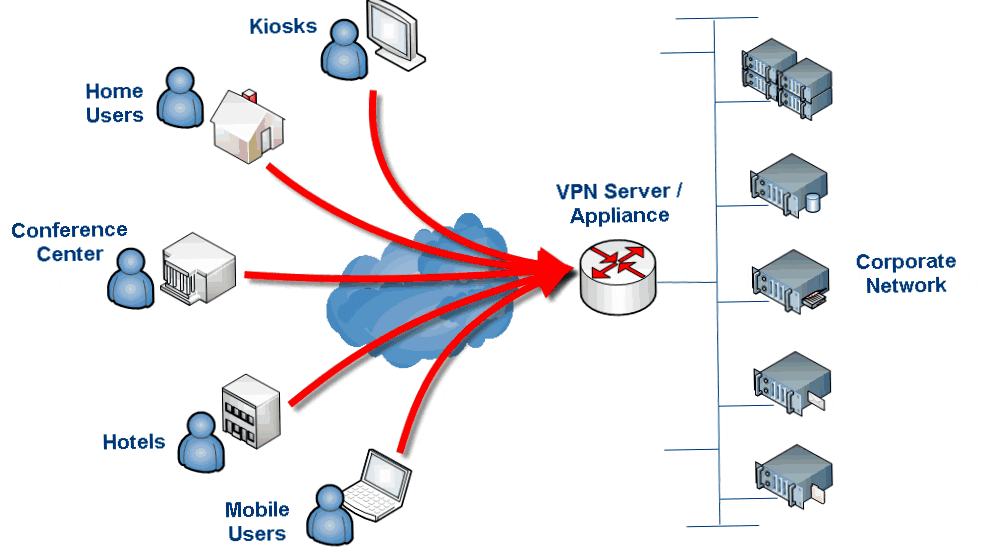
Remote access authentication is an important component of enterprise IT security. Effective authentication ensures that only authorized users can access corporate resources, protecting sensitive information from unauthorized access.
Active Directory is one of the most widely used identity and access management tools in enterprises. It enables centralized management of user accounts, group policies, and other resources. Integrating remote access solutions with Active Directory can increase security and simplify management.
The following article presents various methods for authenticating remote access with Active Directory. This includes the use of VPN connections, the implementation of multi-factor authentication, and the use of smart cards, among other things.
Successfully managing remote access with Active Directory can help minimize IT security vulnerabilities and reduce the risk of security breaches. Organizations should therefore ensure that their remote access solutions are up to date and regularly updated to ensure maximum security.
Read on to learn more about remote access authentication with Active Directory and how you can best protect your corporate resources.
Active Directory – Remote Access Authentication
Active Directory is a directory service developed by Microsoft and used in enterprises to enable centralized management of user accounts, group policies, security access, and other resources. An important part of Active Directory is authentication, which ensures that only authorized users have access to network resources.
Remote access authentication with Active Directory verifies the user's identity when they attempt to access the network. This requires the user to enter their credentials, such as e.g. Username and password. Active Directory then checks this information to ensure the user is authorized to access the network.
To enable remote access authentication with Active Directory, various technologies and protocols must be used, such as.B. the Remote Authentication Dial-In User Service (RADIUS) or the Extensible Authentication Protocol (EAP). These protocols ensure that authentication is secure and reliable.
- Active Directory enables easy and centralized management of user accounts and resources.
- Remote access authentication is a critical component of Active Directory.
- Various technologies and protocols are used to make authentication secure and reliable.
The importance of authenticating remote access with Active Directory
When accessing corporate resources remotely over the Internet or other networks, authentication is critical. The reason for this is that remote access increases the risk of cyberattacks and other threats. Without secure authentication, strangers can gain unauthorized access to corporate data and steal or damage sensitive information.
With Active Directory remote access authentication, it is possible to verify and authorize the identity of users and devices. Active Directory is a system that manages authentication and authorization of users and applications on the network. Integrating Active Directory into a remote access solution significantly reduces the risk of attacks and ensures the security of corporate resources.
- Authenticating remote access with Active Directory offers the following advantages:
- Security: authentication ensures that only authorized users can access corporate resources.
- Reliability: Active Directory is a proven and reliable method for authenticating users and devices.
- Ease of use: integrating Active Directory into a remote access solution makes it easier for users to access needed resources.
To ensure secure authentication of remote access with Active Directory, organizations should ensure that their systems are up to date and that security policies are updated regularly. In addition, it is important that only authorized users have access to corporate resources and that access rights are reviewed regularly.
Remote access authentication with Active Directory
Active Directory is a key component in authenticating remote access to corporate resources. Authentication is performed using the Kerberos protocol, which guarantees secure transmission of credentials. Ticket granting tickets (TGTs) are issued, which allow access to various services within the network.
To enable remote access to corporate resources, a connection to the network must first be established. Various technologies are available for this purpose, such as VPN or Remote Desktop Services (RDS). Once successfully connected, the user's credentials are matched and verified against Active Directory via the Kerberos protocol.
Additional security mechanisms, such as multi-factor authentication or network policies, can be implemented to enhance remote authentication security. Another option is to limit the use of publicly accessible networks and use only corporate networks.
- Authenticating remote access with Active Directory is done using the Kerberos protocol.
- Connection technologies such as VPN or RDS are used to enable remote access to corporate resources.
- Additional security mechanisms and network policies can be implemented to enhance security.
- The use of publicly accessible networks should be avoided.
Advantages of authenticating remote access with Active Directory
Authenticating remote access with Active Directory offers a number of benefits to an organization's IT infrastructure. First, it provides increased security through the use of user accounts and passwords. These must be changed and updated regularly to prevent unauthorized access to the network.
Another benefit of authenticating remote access with Active Directory is that it simplifies the management of users and groups. This allows the IT administrator to respond more quickly and efficiently to changes and adjust access rights accordingly.
In addition, authenticating remote access with Active Directory provides greater control over the use of resources on the network. Access rights can be restricted to specific groups or users to increase network security and efficiency.
Another important benefit of authenticating remote access with Active Directory is the ability to facilitate compliance with rules and regulations. By using user accounts and passwords, access to sensitive data and systems can be controlled and monitored.
Overall, Active Directory remote access authentication provides a secure and effective way to control and manage access to an enterprise network. Helping to better protect IT infrastructure and data.